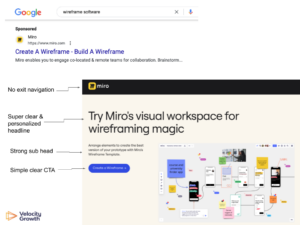How To Find Product Market Fit For Your Start-Up
Product market fit (PMF) is the holy grail for startups. It’s what every startup founder dreams of: a product that is so good, so useful, and desirable that it becomes an integral part of the daily lives of its users. A product so good that millions of users pay for the privilege of using it.
Why product fit is so important
When establishing a startup every day counts, so you need to make sure that you’re building a product that people want. A lot of startups fail because they don’t find the PMF and keep building the wrong product for their customers. You might be able to build a successful business by getting your first 1,000 customers or even 10,000 customers with the wrong product. But eventually, you’ll run out of people who are interested. A successful PMF means that you’ve built a product that has achieved a fit between the market and the product.
For many startups, the product is one of the most important parts of their business. Without the right product or service, one that customers want to pay for, it doesn’t matter how much money you’ve raised or how many customers you have. One of the best ways to find out if your product has achieved product-market fit is through customer feedback.
Here are some indicators you need to look for when determining if your business has reached its PMF milestones using customer feedback:
- You have a lot of paying customers
- Customers are willing to purchase multiple times from you
- Your customers are encouraging others to use your product or service
- Customers have a high loyalty and retention rate
- Your customers tell you that they’re satisfied with the value of your product or service
- Your customers have few if any complaints about your product or service
The most important thing to keep in mind when you’re looking for PMF is that you need to take action. For example, if a majority of your customers believe that your product or service is not worth the price you’re charging, then you need to figure out how you can improve it so that it’s worth their money.
Finding the market that needs what you have to offer
You need to consider the target market. This is the group of people who will buy your products or services. Here are a few questions you can ask yourself when trying to find a market that needs what you have to offer:
- Is there a need for your product or service? If there is already a solution to the problem in the market, then you may not be able to convince people that they need your product. You may want to try and come up with a better solution.
- Is there an audience for your product or service? If there is an audience for your product or service, then you need to consider if there is an audience big enough for you to be able to make a profit.
- Are you starting a business in a growing market? If you’re starting a business in an established market, it can be difficult to compete with existing businesses due to their already established brand recognition and customers in the market. Instead, choose a market that’s growing if you can. This way, you can build up the market and brand recognition for your business.
- What is the growth potential for your product or service? What is the potential for growth in the market? Is the market for your product or service big enough to start a business in?
- Do you have a competitive advantage? What makes your business special or different from other businesses in the market? For example, are you offering a higher quality product or service than your competitors?
Your customers need to want what you have to offer. If they don’t need your product or service, then you’ll have a very tough time building a successful business.
How to know if your product will be successful?
That’s a question that every entrepreneur should ask themselves before investing time and money into building a product. Building a successful business isn’t just about having a great idea, it is about knowing if that idea will be profitable. If you’re willing to test your product idea, the good news is that you don’t need to go through the expense of building it first. You can create a low-cost prototype to test whether people are willing to buy it.
Tip: If you’re not sure if your product is right for your customers, run an A/B test with two different versions of your product. You can also use a landing page to test different messages. This is a great way to test different versions of your product or service and see which version is most appealing to your customers.
The recipe for success
There are three major ingredients in the recipe for product-market fit: the problem, the solution, and the team. Let’s look at each of these ingredients individually.
The problem: You need to solve a problem that people will pay money to solve. This is the biggest challenge that most entrepreneurs face. People rarely care about what you’re building. Nobody wakes up in the morning and thinks, “I can’t wait to pay money to solve this problem!” The best way to find a problem worth solving is to talk with customers and find out what problems they have and how much they’re willing to pay to solve those problems. As an entrepreneur, you should be constantly talking with customers to find out if they’re willing to pay to solve a problem.
The solution: It’s not enough to find a problem that people are willing to pay to solve. You need to have a solution that is better than the existing solutions out there. You can’t just find a problem and then quickly launch a solution hoping that people will pay money for it. This is called solving an imaginary problem, and it’s not going to work.
The team: Your team is just as important as the product and the market. A talented team can execute on any idea, even if the market isn’t ready for it yet. A great team can also adjust a product or service and make it more appealing to their customers, even if the initial concept isn’t perfect.
Having the right ingredients in place will support your business to evolve, adapt and transition its PMF to stay current and to stay engaged with its target market. Your path to success starts with your PMF. It is the crucial jumping-off point for all thriving start-ups.
Finally, if there’s one thing that all successful business owners have in common, it’s the ability to adapt to changing market conditions and consumer demands. Your business will grow and change over time, that is a certainty. What’s important is that you change with it.

Jen is an award winning paid acquisition specialist with an honours masters degree in Digital Marketing Strategies. She is the founder of Co-founder & CMO at Velocity Growth. Jen has extensive experience working with start-ups, marketing teams and founders on their paid acquisition both in an agency and in-house capacity. She has helped companies across Ireland, UK and USA leverage phenomenal growth both nationally and internationally through paid acquisition channels.






